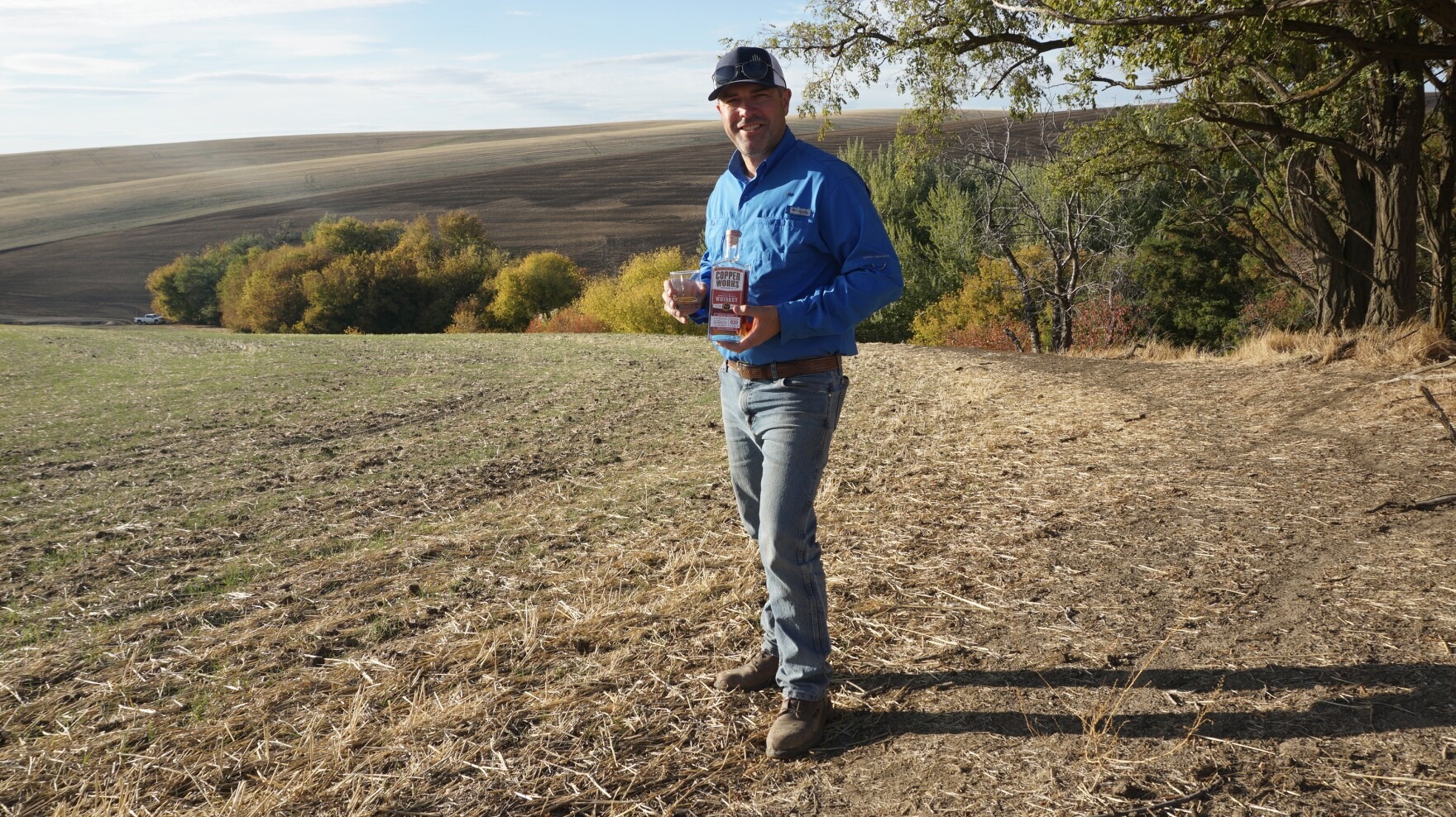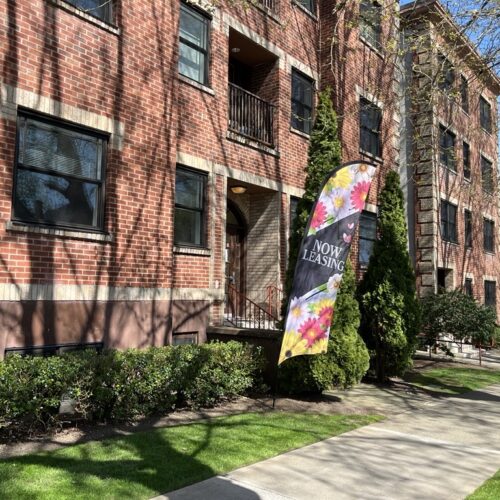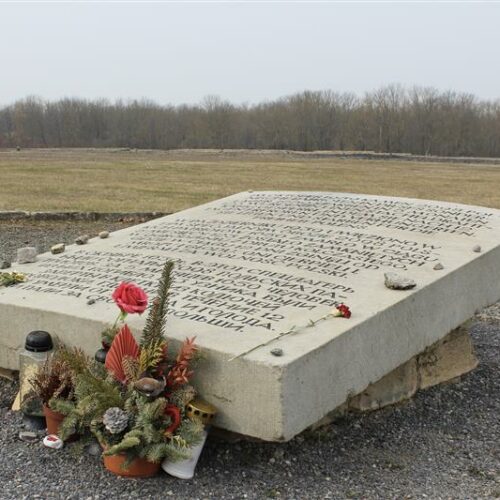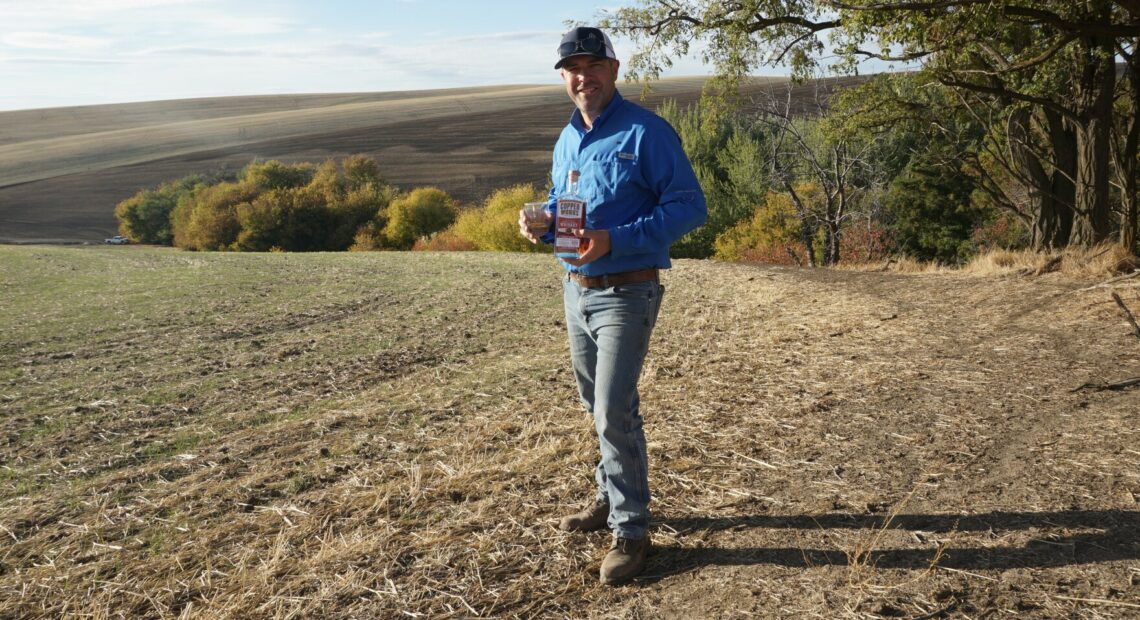
This Whiskey Is For Protecting Salmon
Read
Whiskey isn’t just for drinking anymore. A new craft whiskey is turning the old saying: “Whiskey is for drinking. Water is for fighting,” on its head.
This whiskey is fighting to save salmon.
Copperworks Distilling Co., based in Seattle, has released the first Salmon-Safe American single malt whiskey, made entirely from barley grown in one field in Walla Walla, Washington.
For the Salmon-Safe eco-label, growers work to reduce runoff and to use fertilizers and herbicides that aren’t harmful to salmon. A third-party inspector certifies the processes.
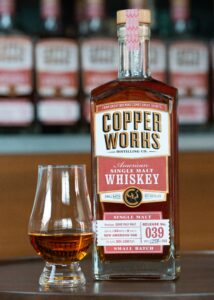
Copperworks Distilling Company, based in Seattle, released the first Salmon-Safe American single malt whiskey, called Release No. 039. CREDIT: Copperworks Distilling Co.
To get the right taste, Jason Parker, Copperworks president, joked that he checks by sipping his creation about every 15 minutes.
The malted barley tastes rich and soft, he said. It burns your throat a little less than corn-based bourbon. The whiskey smells fruity and sweet, which comes from the malt.
“In 100% malted barley whiskey, we’re really trying to feature that grain as a flavor, not just the barrel and not just the alcohol,” Parker said.
Flavor is central to Copperworks, Parker said, and so is conservation.
“That’s the type of thing that we want to open our distillery with by focusing on improving soil vitality, the quality of farms, rewarding small farming, and keeping the carbon footprint down from having to ship grains from all around the world,” Parker said.
Enter the Salmon-Safe certification, which first kicked off in the 1990s in the era of dolphin-safe tuna, said Kevin Scribner, who’s in charge of grower-outreach for Salmon-Safe.
“Salmon-Safe is substantially about water quality,” Scribner said.
More than 200 wineries have earned the Salmon-Safe label, Scribner said, as have 20% of hops fields in Washington. Primarily products that can show a chain of custody, he said.
That’s a little harder to do with grain, Scribner said.
“That’s a harder crop to work with because it goes to commodities. How do you put a little eco-label on a piece of grain?” Scribner said
Phil Neumann, co-founder of Mainstem Malt, figured it out: you malt the grain. Neumann said he had a vision of malting only Salmon-Safe grains from Washington and Oregon.
“We’ve been on this multi-year campaign to put single fields of grain into products like Copperworks whiskey release,” Neumann said.
Malting acts as the middleman between growers and distillers. The week-long process transforms the raw grains into a product full of sugars and enzymes that brewers and distillers use, Neumann said.
Most malted grain used in distilling can’t be traced back to its source, Parker said. Eventually, he said, Copperworks would like to trace more of its grains to Salmon-Safe fields and farms.
The barley used in the small batch of Copperworks Release No. 039 sprouted up in a 67-acre field in Walla Walla.
Grower Nathan Rea started converting his fields to earn a Salmon-Safe certification in 2016. He worked with a local agronomist to experiment with different chemicals to find ones that weren’t toxic to salmon and still benefited his crops.
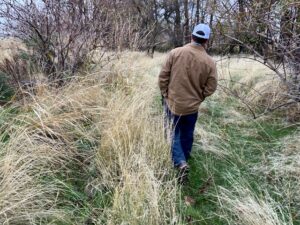
Grower Nathan Rea walks along a stream buffer near Russel Creek. The buffer protects the stream and fish from runoff. CREDIT: Courtney Flatt
“That was a little bit of a struggle, trying to figure out what we could to make sure we’re not getting behind on weed management,” Rea said. “We had to figure some things out, but we’ve made it work.”
Rea drags his hand along the tall brush lining the south fork of Russell Creek, where he farms. The brown bunch grasses have dried out now. Rea’s dog, Josephine, runs ahead. (Josephine is named after the same field where Rea grew the barley that went into Release No. 039.)
Rea added stream buffers to protect the water from potential runoff from his surrounding fields. He planted the buffers with five different species of grass and around 10 different trees and shrubs, including roses and berry trees.
Inspectors tested multiple streams in the area and didn’t find signs of chemical drift, he said.
“I think it said a lot for the farmers in this area. We are already doing a good job farming,” Rea said.
Good for farmers, and good for salmon, too.
Related Stories:
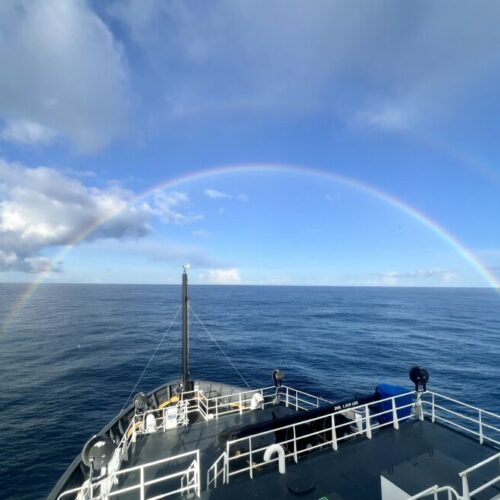
Ocean conditions mixed for salmon, leading to average salmon returns
NOAA biologist Brian Burke says mixed ocean conditions may lead to average salmon runs, but climate change is disrupting ecosystems—making continued research critical.

Canadian leaders hope trade negotiations won’t derail Columbia River Treaty
A view of the Columbia River in British Columbia. The Columbia River Treaty is on “pause” while the Trump administration considers its policy options. However, recent comments by President Donald
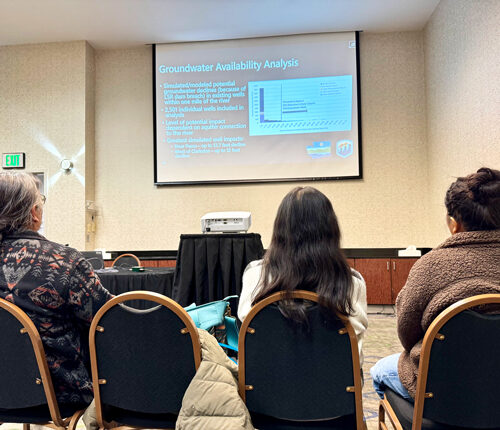
Snake River water, recreation studies look at the river’s future
People listen to an introductory presentation on the water supply study findings at an open house-style meeting in Pasco. After they listened to the presentation, they could look at posters

